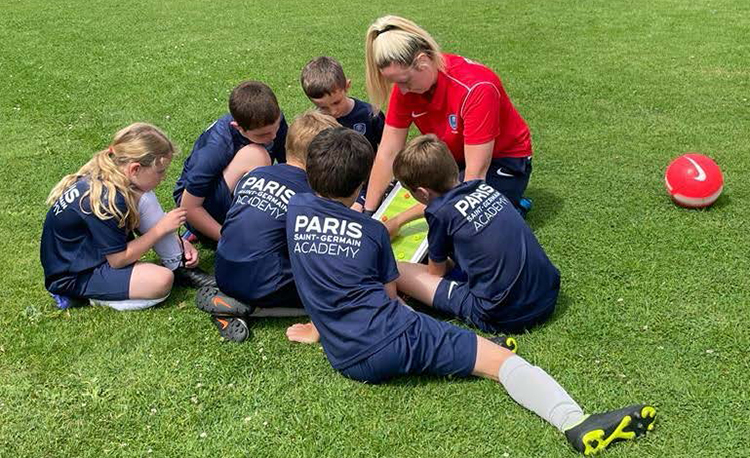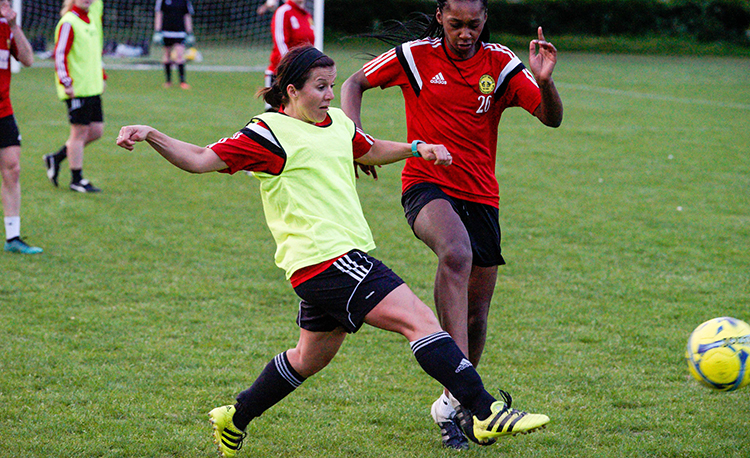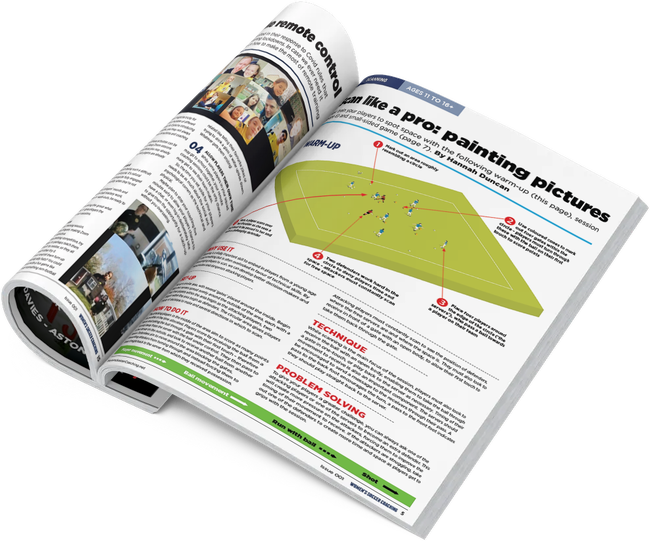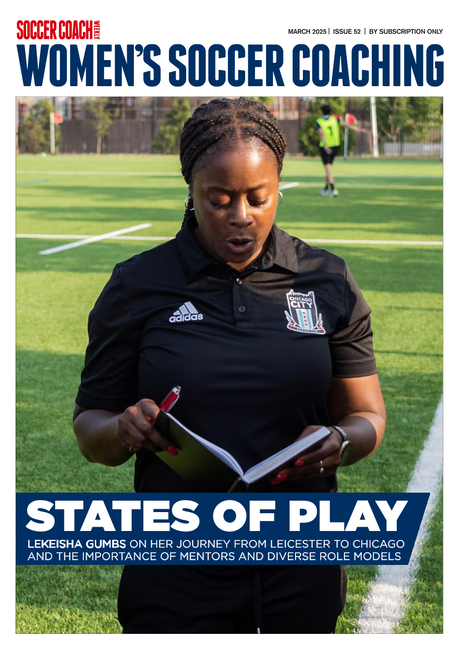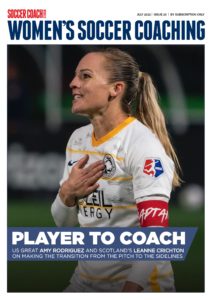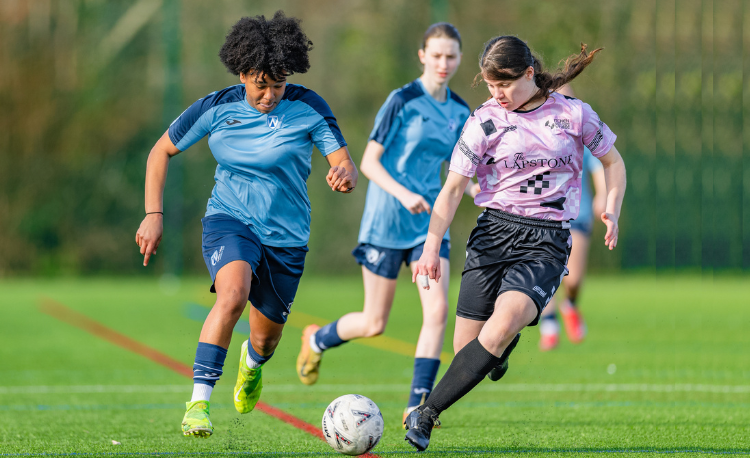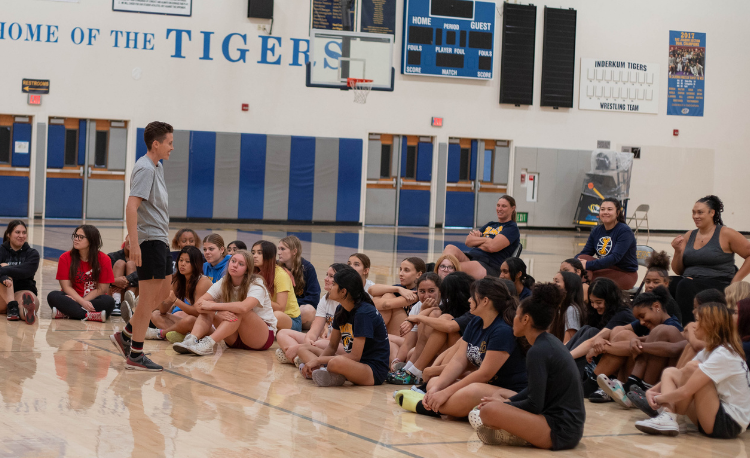You are viewing
1 of your 3 free articles
Ways to create a competitive environment
How you hand out points in activities can create intense but fun competition in training sessions, says Paris Saint-Germain Academy Wales coach Lowri Hunt
Intensity is a common term in soccer.
As coaches, we persistently seek to inject intensity into our sessions and team performances. A wide range of strategies can be used to achieve this.
One example is the effective use of scoring systems within sessions, to create competition and make the sessions more engaging. However, there are several different ways of achieving this.
Redefine success
Most players want to score, particularly the younger ones. However, soccer is far more than simply just putting the ball in the back of the net.
Varying the way players can score goals or gain points within sessions can influence the intensity in any area of the pitch or phase of play.
We can also help players to develop a more holistic game understanding by adding value to other actions within our sessions.
For example, you could set up a 1v1 situation where the attacker starts with the ball and tries to score by dribbling into an end zone. If successful, they get one point.
However, if the defender wins the ball off the attacker and manages to stop it in their opponent’s end zone, they get two points. This provides additional incentive to win the ball back and encourages players to be purposeful in possession after recovering the ball.
"Varying the way players gain points in sessions can influence the intensity of play..."
Both players will want to beat their opponent, thus encouraging a winning mentality. However, awarding double points for scoring after winning the ball back adds value to the desired behaviour.
Scoring systems can be used as a form of positive reinforcement. If players are recognised for work rate or performing a favoured action by being awarded extra points, they will quickly realise this particular action is of value and may reproduce it within the session.
This is particularly true for young players that have a lower understanding of the game and thrive off recognition.
This desired action or behaviour can be adapted to suit your session topic. Moreover, you could also invite your players to quantify the value of the desired actions and ask them why they have given an action or behaviour a certain value.
This can provide insight into players’ game understanding and create a more player-centred use of scoring systems, which encourages deeper learning.
Promote fun
Teaching and developing new techniques with beginners can be repetitive and dry. Players may become distracted, lose focus and not put maximum effort into the task.
The use of scoring systems can help make technical-based sessions much more fun and enjoyable. Have your players compete against each other, themselves, or the clock to make activities more competitive and fun.
Self-assessment of progress
The way we use scoring when introducing a new technique may differ from the way we use it in more game-realistic scenarios.
Initially, I want players to focus on developing a technique at their own rate. At the start of each session, while the players are arriving, I like to give them the challenge of beating their juggling record from the previous session.
However, I never ask the players to shout their scores out as this can lead to players with lower scores feeling disheartened. The players are responsible for remembering their own score and trying to surpass it the following week.
The ’competitive cauldron’
I have recently engaged with UNC basketball coach Dean Smith’s ‘competitive cauldron’ concept, which allows you to objectively monitor players’ performance within sessions.
I only work with my players on a weekly basis; therefore, I cannot implement this concept in its full glory. I have used it to infuse intensity within small-sided games at the end of my sessions.
To do this, I have created a simple league table that includes win, lose and draw percentages for each player. I have found that monitoring these simple metrics has led to increases in work rate, competitiveness, and the desire to succeed.
"Scoring systems can help make technical-based sessions more fun and enjoyable..."
I have also noticed that this concept has encouraged less confident players to ‘have a go’, particularly at taking players on.
The competitive cauldron concept could be engineered to suit your playing principles and session topic. You could even include position-specific metrics, such as clean sheets, assists, overlaps, goals, blocks, and interceptions, to further develop game understanding.
However, it should be noted the greater time and resources you have, the more effectively you can use this approach.
The concept is most effectively used alongside tactical guidance to prevent player greediness to move up the scoreboard. The tool should also be used in a light-hearted way, especially when working with younger and less experienced players.
Development of psychosocial competencies
As coaches, we want to create better players and better people. The use of scoring systems to create a competitive environment can help to do just that.
Creating competition in sessions exposes players to how it feels to win and lose. For younger players, high-energy themed activities, such as ‘bank robbers’ or ‘treasure chest’, can generate this kind of environment.
Development of psychosocial competencies such as resilience and ability to cope with pressure can aid players at a performance level and in their everyday life.
The use of scoring systems is effective in increasing session intensity and challenging our players. However, it is important to facilitate such competition in a healthy manner, as intensity and competition overload can be detrimental to our players.
Getting to know your players and how they are motivated will help you determine how much competition to use.
The bottom line is, we want to create a competitive environment, but we also want our sessions to be fun and enjoyable.
Related Files
Newsletter Sign Up
Newsletter Sign Up
Discover the simple way to become a more effective, more successful soccer coach
In a recent survey 89% of subscribers said Women's Soccer Coaching makes them more confident, 91% said Women's Soccer Coaching makes them a more effective coach and 93% said Women's Soccer Coaching makes them more inspired.
*includes 3 coaching manuals
Get Inspired
All the latest techniques and approaches
Women's Soccer Coaching offers proven and easy to use soccer drills, coaching sessions, practice plans, small-sided games, warm-ups, training tips and advice.
We've been at the cutting edge of soccer coaching since we launched Soccer Coach Weekly in 2007, creating resources for the grassroots youth coach, following best practice from around the world and insights from the professional game.
